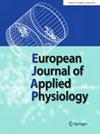运动科学与实践中的心率和心率变异性监测静态测试
摘要
正静态测试涉及从不同体位(如从卧位或坐位到直立位或站立位)的转换,通过心率(HR)和心率变异性(HRV)等测量指标的复杂调整,为了解自律神经系统(ANS)的功能和心血管调节提供了宝贵的见解。这篇叙述性综述探讨了正静压反应背后错综复杂的生理机制,并评估了其对运动科学和体育实践的意义。在这一问题上,主动正静态测试(如主动站立)以不同于被动倾斜测试的方式对心血管自律神经功能提出了挑战。有资料表明,站立时血压会短暂降低,导致心率反射性增快和外周血管收缩。在这种急性反应之后,收缩压和舒张压通常会比仰卧体位时略有升高。站立时的自律神经系统反应是由心脏迷走神经的瞬时收缩开始的,随后是交感神经的激活和迷走神经在最初 25-30 次心跳中的重新激活。因此,站立时心率会立即增加,在 15-20 次心跳后达到峰值,而被动倾斜时由于缺乏肌肉活动,心率增加不明显。与仰卧位相比,站立还会降低与迷走神经相关的心率变异指数。在过度训练的耐力运动员中,副交感神经和交感神经的活动在仰卧位和站立位时都会减弱。他们对站立的反应低于非过度训练的运动员,心率变异有进一步下降的趋势,这是迷走神经明显退缩的表现,在某些情况下,交感神经兴奋性也会下降,这表明运动员可能处于过度训练状态。然而,作为一个重要的主要特征,可以注意到其他病理生理条件包括 ANS 神经驱动对兴奋性刺激(如正压挑战)的反应性降低或反调节。因此,特别是积极的正静态测试可以提供更多有关心率(V)反应性和恢复的信息,为了解运动员的训练状况、疲劳程度和对工作量的适应性提供有价值的信息。站立时进行测量还可以解决副交感神经饱和的问题,这是一种常见现象,尤其是在训练有素的耐力运动员中。在趋势分析中,对数据的解释应考虑到生活和体能训练压力导致的测试期间急性反应的个体间差异。因此,需要额外的测量方法(如心理测量量表)来提供心率和心率变异分析解释的背景。然而,正压性不耐受的发生率应根据个体情况进行评估,在考虑对特定亚人群实施正压性测试时必须考虑到这一点。制定标准化测试程序和解释指南的建议,总体目标是加强训练和恢复策略。尽管上述应用领域的研究结果很有前景,但仍需要进一步的研究、彻底的方法比较研究和系统性综述,以评估运动科学和训练中对不同人群进行训练监测和微调的正静力测试的整体前景。

Orthostatic testing, involving the transition from different body positions (e.g., from lying or sitting position to an upright or standing position), offers valuable insights into the autonomic nervous system (ANS) functioning and cardiovascular regulation reflected through complex adjustments in, e.g., measures of heart rate (HR) and heart rate variability (HRV). This narrative review explores the intricate physiological mechanisms underlying orthostatic stress responses and evaluates its significance for exercise science and sports practice. Into this matter, active orthostatic testing (e.g., active standing up) challenges the cardiovascular autonomic function in a different way than a passive tilt test. It is well documented that there is a transient reduction in blood pressure while standing up, leading to a reflex increase in HR and peripheral vasoconstriction. After that acute response systolic and diastolic blood pressures are usually slightly increased compared to supine lying body position. The ANS response to standing is initiated by instantaneous cardiac vagal withdrawal, followed by sympathetic activation and vagal reactivation over the first 25–30 heartbeats. Thus, HR increases immediately upon standing, peaking after 15–20 beats, and is less marked during passive tilting due to the lack of muscular activity. Standing also decreases vagally related HRV indices compared to the supine position. In overtrained endurance athletes, both parasympathetic and sympathetic activity are attenuated in supine and standing positions. Their response to standing is lower than in non-overtrained athletes, with a tendency for further decreased HRV as a sign of pronounced vagal withdrawal and, in some cases, decreased sympathetic excitability, indicating a potential overtraining state. However, as a significant main characteristic, it could be noted that additional pathophysiological conditions consist in a reduced responsiveness or counter-regulation of neural drive in ANS according to an excitatory stimulus, such as an orthostatic challenge. Hence, especially active orthostatic testing could provide additional information about HR(V) reactivity and recovery giving valuable insights into athletes' training status, fatigue levels, and adaptability to workload. Measuring while standing might also counteract the issue of parasympathetic saturation as a common phenomenon especially in well-trained endurance athletes. Data interpretation should be made within intra-individual data history in trend analysis accounting for inter-individual variations in acute responses during testing due to life and physical training stressors. Therefore, additional measures (e.g., psychometrical scales) are required to provide context for HR and HRV analysis interpretation. However, incidence of orthostatic intolerance should be evaluated on an individual level and must be taken into account when considering to implement orthostatic testing in specific subpopulations. Recommendations for standardized testing procedures and interpretation guidelines are developed with the overall aim of enhancing training and recovery strategies. Despite promising study findings in the above-mentioned applied fields, further research, thorough method comparison studies, and systematic reviews are needed to assess the overall perspective of orthostatic testing for training monitoring and fine-tuning of different populations in exercise science and training.

 求助内容:
求助内容: 应助结果提醒方式:
应助结果提醒方式:


